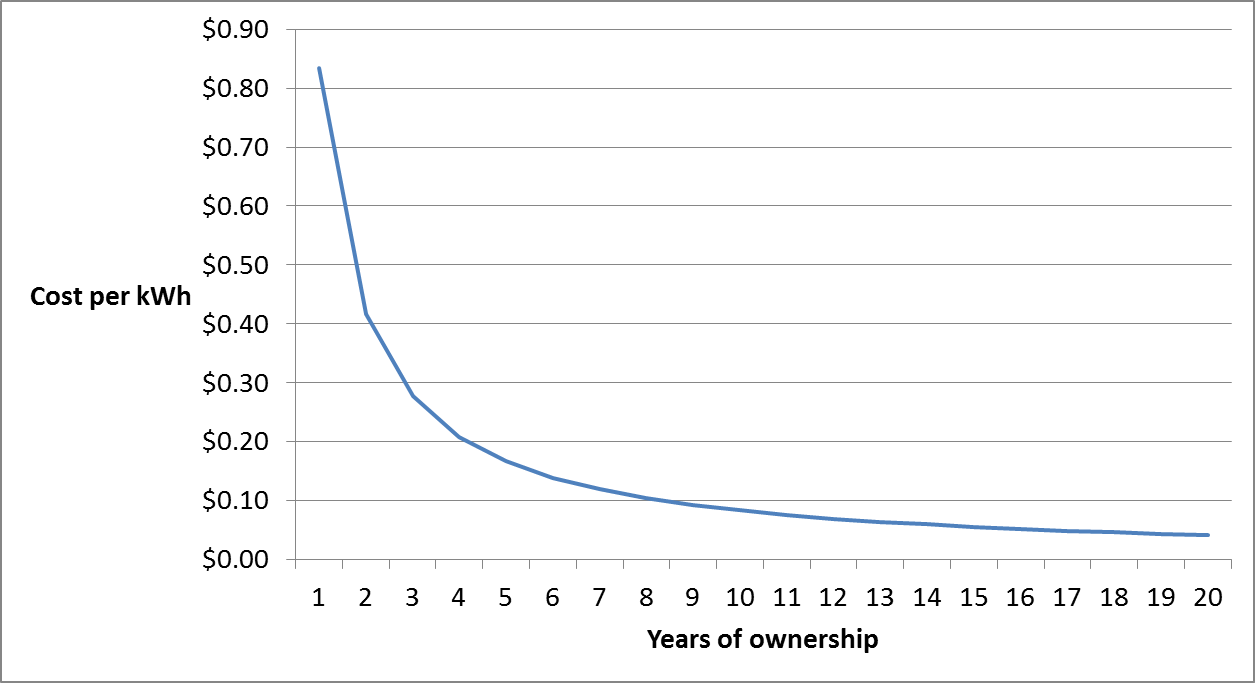$1 per watt solar is spreading - utilities must become cannibals
A statement from AGL Energy that it intends to lead the charge of what it predicts will be 2.5 million households moving to a combination of solar plus batteries by 2020, raised a fair few eyebrows among industry participants this week.
The reality is that AGL's solar business has been around for a while now and has not made much of a splash. Based on data available via the Renewable Energy Certificate Registry from Green Energy Markets, AGL Energy Services represented less than 1% market share of solar renewable energy certificates (STCs) created. It's possible the size of its solar business is obscured in this data via it using intermediaries to register certificates for systems they sell, but this in itself would suggest a solar business of small scale.
Yesterday Matthew Wright highlighted doubts that AGL were really serious about leading a charge into supporting households to meet their energy needs with less reliance on the grid, because this would cannibalise other parts of their business.
But the reality is that AGL does not have a choice.
A few days ago I reported on how Melbourne households could obtain 5 kilowatt systems fully installed for prices of $1 per watt (post rebate) from a major solar retailer using quality tier 1 panels ($1 per watt solar – it's here now). Now True Value Solar is advertising systems as small as a 1kW system for a dollar per watt as this snapshot below from their website shows. They are also offering 3kW systems for $2799, or 93 cents per watt.
True Value Solar website advertising for 1kW system

In addition EuroSolar, another major solar retailer (although one with some questions hanging over its reputation highlighted in The murky side of Australian solar panels) is now advertising a 1.5kW system for $1.16 per watt.
Euro Solar website advertising for 1.5kW system

These offers usually come with an array of catches that mean it is not available to all. In addition some competing suppliers to these companies have suggested to Climate Spectator that such offers for small systems are a sales tactic to get customers enquiring, but then push them onto a larger system.
But again it illustrates that solar systems are getting to price levels that just about any home owner would be mad not to take up. Indeed a larger system at $1 per watt makes reasonable financial sense even with a low feed-in tariff of just 8 cents per kilowatt-hour.
To illustrate in a simple manner, avoiding the use of discount rates that most households can't process, let's just divide the purchase price of a $1/watt system by the amount of power generated from the system over time to give a simplified price per kilowatt-hour of power (assuming Melbourne with generation of 1200kWh per annum per kilowatt). The chart below tells the story and is our chart of the week.
Cost per kWh for solar system priced at $1 per watt (without applying interest rate on capital)

Within four years the amount of power you've got out of the system has cost you about 20 cents per kilowatt-hour. Better than any offer from a power retailer for daytime power. By year seven it's even outdoing the cost of power offered by retailers for off-peak periods. And while it's a long time, by year 15 the cost of the power is equal to feed-in tariffs of 8 cents/kWh and the system should still have another five good years left, if not more.
As Climate Spectator reported back in August when AGL and Origin Energy reported their FY 2014 financial results (see: AGL's tense shift towards energy solutions provider; and Origin hit by solar and efficiency demand drop), power retailers are watching their residential customer margins get gobbled away by declining grid power consumption.
They are hoping to slow down the attack of solar through regulatory changes. In particular by getting the small-scale renewable energy target scaled back, and also changing power tariffs towards allocating more costs to peak demand and less on overall kilowatt-hours consumed.
But this strategy may not come off. Shadow energy minister Gary Gray explained to Climate Spectator last week that Labor dropped out of negotiations with the Coalition Government over changes to the RET, partly due to Labor being unwilling to accept the Coalition's demand to scale back the scheme's support for solar.
So retailers face a stark choice, sit by and let others eat away their business or become cannibals.













